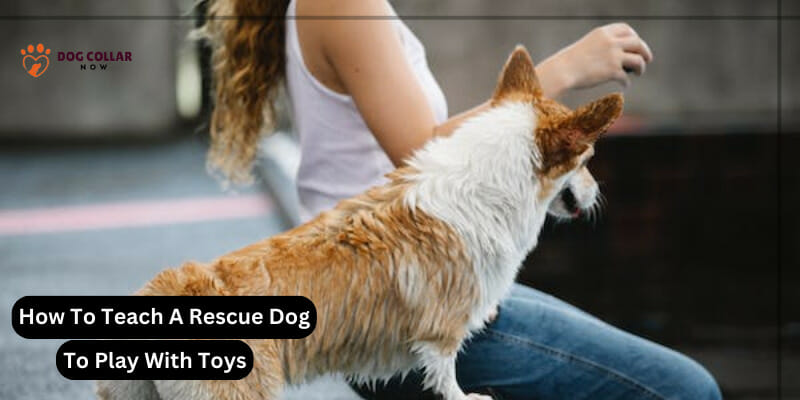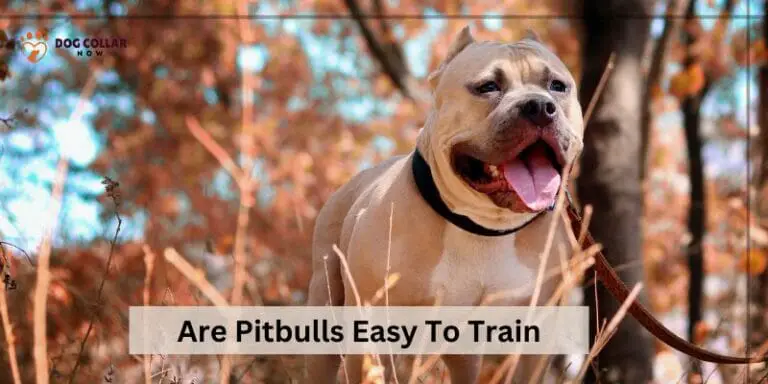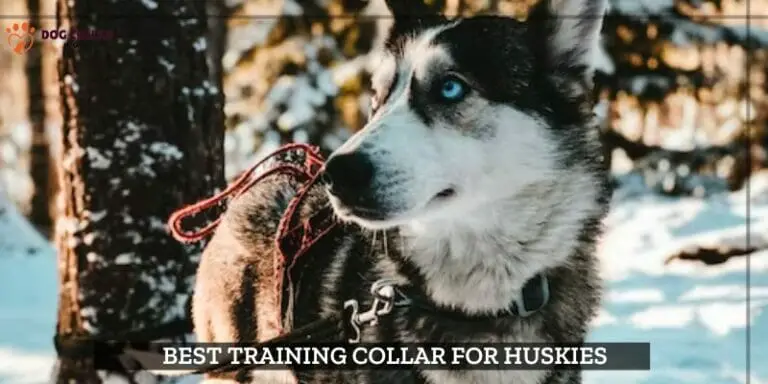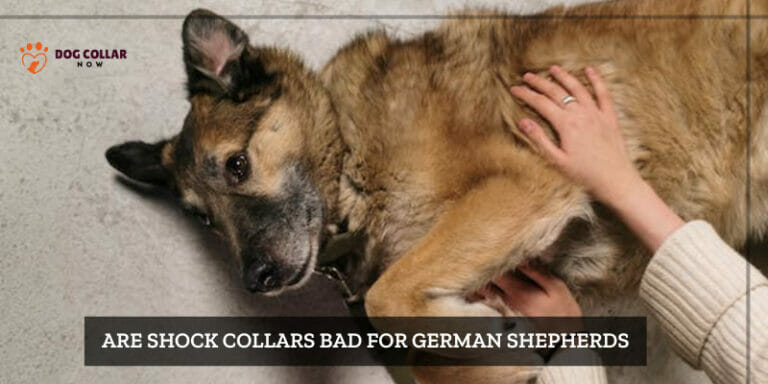How To Teach A Rescue Dog To Play With Toys – 8 Simple Methods

Ignite the hidden spark of playfulness within your rescue dog and embark on an exciting journey of discovery! Have you ever wondered how to teach a rescue dog to play with toys?
While some rescue dogs take to toys like ducks to water, others may be unsure or hesitant at first. But fear not! With patience, understanding, and the right approach, you can teach stray dogs how to play with toys in no time.
Now, we’ll explore easy methods that will have their tails wagging with excitement as they embrace the world of playful fun!
How to teach a rescue dog to play with toys – Simples Steps
Teach your dog to play with toys can be a rewarding and enjoyable experience for both of you. It’s important to approach the process with patience, understanding, and positive reinforcement. Here are some easy methods to help you teach your rescue dog to play with toys:
Create a positive environment
Give your dog a comfortable and safe space to explore and play. Remove any distractions or potential stressors that may hinder their ability to focus on the toys.
Choose the right toys
Select toys that are appropriate for your dog’s size, age, and preferences. Different dogs have different preferences, so offer a variety of toys such as plush toys, chew toys, puzzle toys, tug toys, squeaky toys, or interactive toys to see what captures their interest.
Introduce the toys gradually
Begin by introducing one toy at a time to prevent overwhelming your dog. Place the toy near them and allow them to sniff and investigate it. Encourage positive associations by praising and rewarding them with treats or verbal praise when they show any interest or interaction with the toy.
Play together
Dogs often learn by observing and imitating. Demonstrate how to play with the toy by engaging in interactive play. Tug-of-war or fetch games can be great ways to spark their interest and teach them how to interact with toys. Be patient and give them time to understand the game.
Incorporate training commands
Integrate basic training commands, such as “take it” or “drop it,” while playing with toys. Use these commands to teach your dog how to interact with the toys appropriately and encourage positive behavior during playtime.
Make it rewarding
Associate playtime with positive experiences. Offer treats, praise, or a favorite food item as a reward when your dog shows interest or engages with the toy. This positive reinforcement will create a positive association with playing and motivate your dog to continue exploring and interacting with toys.
Be patient and consistent
Every dog learns at their own pace, so it’s crucial to be patient throughout the training process. Consistency is key to reinforcing desired behaviors. Set aside regular play sessions each day to help your dog establish a routine and develop a stronger bond with their toys.
Gradually increase difficulty
Once your dog is comfortable playing with basic toys, you can gradually introduce more challenging toys or puzzle games. These toys can provide mental stimulation and help build problem-solving skills.
Remember, every dog is unique, and the time it takes for them to learn to play with toys may vary. Some dogs may have had previous negative experiences, so it’s important to go at their pace and respect their comfort levels.
By using these easy methods and providing a positive and supportive environment, you can help your stray dog develop a love for having fun with toys, which will enhance their overall well-being and happiness.
Different Methods to Encourage Your Dog to Play
There are several effective methods to encourage your dog to have fun.
1- The Gentle Encouragement Method
When it comes to teaching a rescue dog to fun with toys, the gentle encouragement method can be highly effective. This approach focuses on creating positive associations with toys and gradually building your dog’s confidence and interest in playing.
Begin by introducing your dog to a variety of different toys. Offer them one at a time, allowing your dog to sniff, lick, or nudge the toy without any pressure. If they show even the slightest interest, praise them and offer a treat as reinforcement.
Once your dog is comfortable exploring the toy, gently encourage them to interact with it using soft verbal cues or gestures. For example, you can say “Good boy!” while pointing towards the toy. If they respond positively by touching or mouthing the toy, reward them again.
It’s important not to force your stray dog into playing if they’re still hesitant. Instead, continue offering different toys and rewarding any small steps towards engagement. Over time, their confidence will grow and they may start showing more enthusiasm for playtime.
Remember to always remain patient and understanding throughout this process. Each forgotten dog is unique and may require varying amounts of time and support before fully embracing playtime with toys.
2- The Management Method
The Management Method is a practical approach to teaching your stray dog to play with toys. This method focuses on creating a positive and controlled environment for your pup, helping them feel safe and comfortable while exploring their toys.
Implement the Management Method by introducing toys gradually in a calm space. Start with one toy near their resting spot, allowing them to investigate without pressure or distractions.
Praise and reward your new dog when showing interest in toys. Increase the number of available toys gradually, ensuring accessibility without overwhelming them.
Rotate toys regularly to prevent boredom and keep things exciting for your pup.
By using this method, you can help eliminate any potential stress or anxiety associated with toy playtime for your stray dog. Remember to be patient and understanding throughout the process, as every dog learns at their own pace.
3- The Soccer Method
The Soccer Method is a fun and interactive way to teach homeless dogs how to enjoy toys. Just like the name suggests, this method involves using a soccer ball or any other type of ball that your dog can easily chase and interact with.
In the start, find an open space where you can safely play with your dog without any distractions. This could be in your backyard or at a nearby dog park. Make sure your dog doesn’t run off and the place is secure.
Begin by introducing the ball to your dog. Let them sniff it and get familiar with it before gently rolling it on the ground. Encourage them to go after it by using excited tones and gestures.
Once they start chasing the ball, make sure to reward them with praise and treats when they successfully retrieve it. This positive reinforcement will help reinforce their interest in playing with toys.
As you continue playing, gradually increase the difficulty level by throwing the ball further away or making small obstacles for them to navigate around. This will not only keep things interesting but also challenge their problem-solving skills.
Remember, every dog learns at their own pace, so be patient and consistent in practicing the Soccer Method with your rescue pup. With time and practice, you’ll see them become more enthusiastic about playing with toys!
Discover Your Dog’s Preferred Toys and Games
Consider individual preferences when teaching homeless dogs to enjoy toys. Observe their behavior closely and offer a variety of toys to find what excites them. Watch for signs of engagement like tail wagging and eager grabbing.
Note activities that bring out their playfulness, such as chasing balls or solving puzzles. Choose toys accordingly and be patient in finding what works best for your furry friend.
Different types of Dog toys
Different types of toys can greatly impact a rescue dog’s interest and engagement. It’s important to experiment with various options to find what your furry friend enjoys the most. Here are a few different types of toys that you can try:
Plush Toys
Soft, cuddly plush toys can be great for dogs who enjoy snuggling or carrying objects around in their mouth. Look for ones with squeakers inside to add an extra level of excitement.
Interactive Toys
These are designed to keep your dog mentally stimulated and entertained. Puzzle toys, treat-dispensing toys, and hide-and-seek games are all examples of interactive toys that can engage your dog’s natural instincts.
Chew Toys
Dogs have a natural urge to chew, especially puppies who are teething. Providing durable chew toys not only satisfies this need but also helps prevent destructive chewing on household items.
Fetch Toys
If your rescue dog loves running and retrieving, fetch toys like balls or frisbees can provide hours of fun at the park or in the backyard.
Remember, not all dogs will have the same preferences when it comes to toy choices, so it may take some trial and error to find what resonates with your furry companion!
Conclusion
Teaching rescue dogs to enjoy toys requires patience, positive reinforcement, and an understanding of their unique background and needs. By gradually introducing toys, using enticing rewards, and providing a safe and comfortable environment, you can help your recovered dog develop confidence and learn to enjoy the playful and enriching experience of interacting with toys. Remember to tailor your approach to the individual dog and celebrate their progress along the way. With time and consistent effort, you can help your rescue dog discover the joy of play.
FAQs
Why don’t stray dogs like toys?
Stray dogs may not show an interest in toys due to various reasons such as lack of exposure to toys during their time on the streets, focusing on survival and basic needs, or past negative experiences that have made them wary or disinterested in toys.
How do I get my scared dog to play with toys?
To get a scared dog to play with toys, start by creating a safe and calm environment, gradually introduce the toys, use positive reinforcement and rewards, and be patient and gentle with your dog’s progress.
Why doesn’t my rescue dog know how to play?
This dog may not know how to play initially due to previous experiences or lack of exposure. They may need time, patience, and positive reinforcement to learn and feel comfortable engaging in play.
How can you tell if a rescue dog is happy?
Signs that a stray dog is happy include a relaxed body posture, wagging tail, bright and alert eyes, responsive and playful behavior, appetite and interest in activities, and forming a bond with their new owner.
How long does it take to get used to a rescue dog?
The time it takes for a dog to get used to their new environment varies. It can range from a few days to several months depending on the dog’s temperament, previous experiences, and the efforts put into their socialization and training.
Do rescue dogs miss their owners?
Homeless dogs may miss their previous owners, especially if they had a strong bond. However, with time, proper care, and love from their new owners, they can adapt and form new attachments, ultimately finding happiness in their new home.






